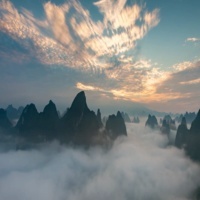Changbai Mountain


topography
The Changbai Mountain Scenic Area is located on the edge of the East Asian continent and is close to the strong fold belt of the Pacific Ocean. Before the Mesozoic 200 million to 75 million years ago, there were many crustal changes and ancient rock formations were formed. The Mesozoic experienced hundreds of millions of years of wind and rain erosion, forming a series of inter-mountain basins. In the Cenozoic, it became an undulating quasi-plain with scattered mounds. The landform of the scenic spot is a typical volcanic landform. From bottom to top, it is mainly composed of three major parts: basalt platform, basalt plateau and volcanic cone. On the vast basalt platform and basalt plateau is a volcanic cone - the main peak of Changbai Mountain. The basalt plateau (also known as the sloped plateau at the foot of the mountain) is located between the basalt platform and the volcanic cone. The transition zone from the body to the basalt platform.
Climate characteristics
Changbai Mountain Scenic Area belongs to the temperate continental mountain climate affected by the monsoon. In addition to the characteristics of the general mountain climate, there are obvious vertical climate changes. The general characteristics are long and bitter winters, short and cool summers, dry winds in spring, and foggy and cool autumns. The average annual temperature is between -7°C and 3°C, and the average temperature in July does not exceed 10°C. The annual precipitation is between 700 and 1400 mm, and the precipitation from June to September accounts for 60% to 70% of the annual precipitation. Many clouds and fog, strong wind and low air pressure are the main characteristics of the climate of the main peak of Changbai Mountain.
previous








